

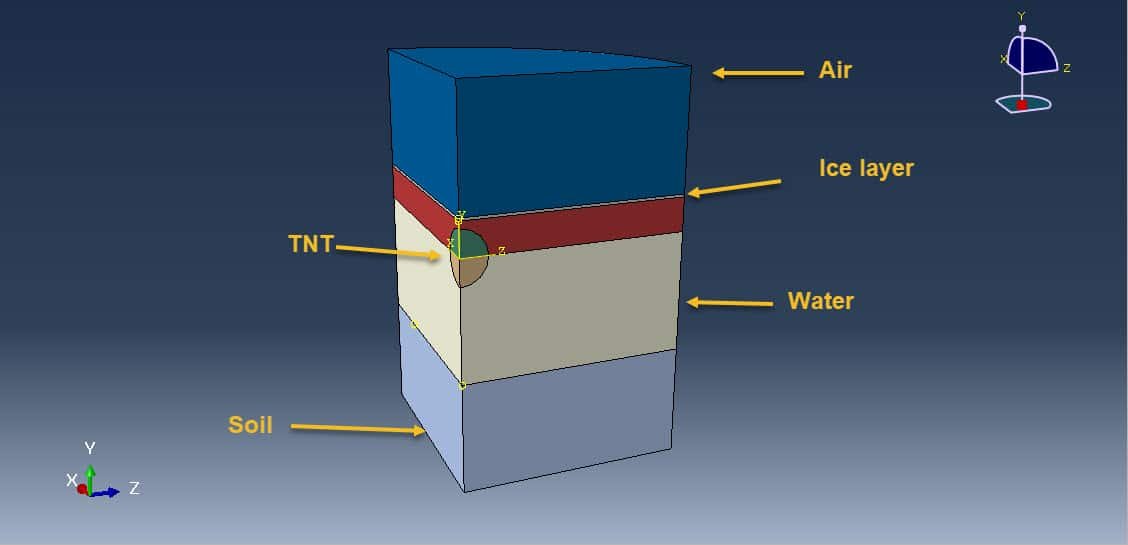

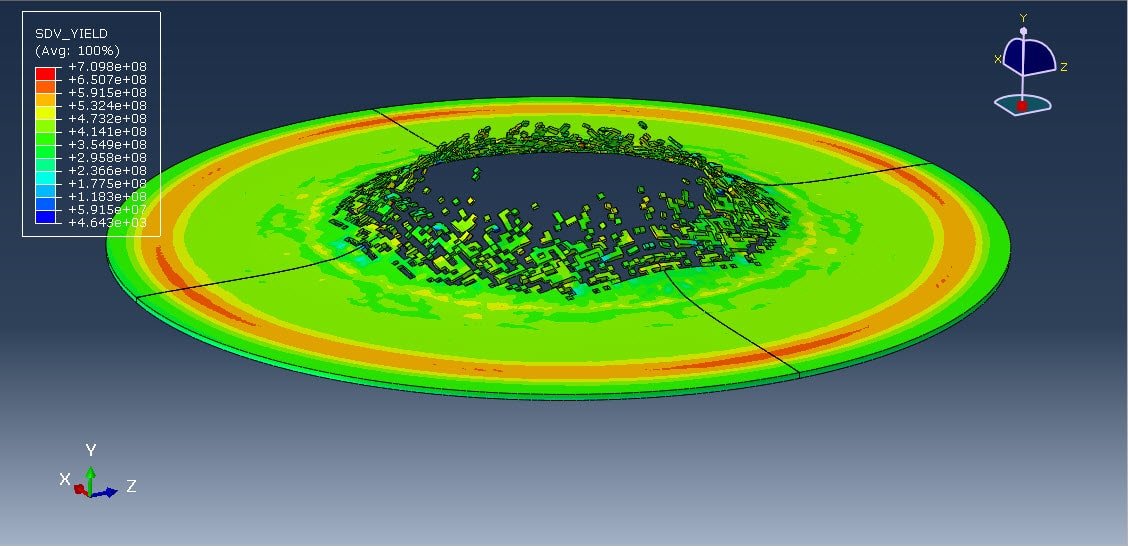

In this tutorial, the simulation of an ice sheet in interaction with water subjected to underwater explosion(UNDEX) load by using the CEL method has been studied. To model ice failure and damage, the Johnson-Holmquist brittle damage model is considered.
In polar and subpolar regions, floating ice sheets often interact with man-made structures and activities, including those involving explosive forces underwater. One critical area of research is the behavior of an ice sheet interacting with water when subjected to an underwater explosion (UNDEX) load. Such scenarios may occur due to naval operations (e.g., underwater munitions testing), accidental detonations, or even controlled demolitions beneath ice-covered waters.
Understanding how ice sheets respond to these explosive loads is crucial for:
Ensuring the safety of vessels and structures operating in icy waters.
Evaluating potential environmental damage.
Designing ice-hardened platforms or protective systems.
Developing predictive models for ice failure or breakup.
This problem involves fluid–structure interaction (FSI) between the water, the ice sheet, and the pressure waves generated by the explosion.
An underwater explosion releases a rapid, high-energy pulse that propagates through water primarily as a shock wave, followed by bubble pulsations. These pressure waves can interact strongly with floating or submerged structures.
Key stages:
Shock wave propagation: A high-pressure wave spreads outward from the detonation point.
Bubble pulse: A gas bubble forms, expands, and collapses, generating secondary pressure loads.
Surface effects: The pressure field also reflects and refracts upon reaching the free surface or submerged boundaries, including ice.
An ice sheet behaves like an elastic or viscoelastic plate depending on temperature, thickness, salinity, and other physical properties. For modeling, it is often treated using the JH2 model to consider dynamic failure and brittle damage.
Key properties:
Flexural rigidity.
Tensile/compressive strength.
Fracture toughness (if cracking is considered).
A comprehensive analysis involves:
Numerical modeling: Using tools like FSI simulations (e.g., ANSYS, LS-DYNA, ABAQUS with acoustic elements) to model the pressure wave propagation, fluid flow, and ice deformation.
Analytical methods: The Coupled Eulerian-Lagrangian method is so appropriate for this type of analysis.
Experimental validation: Using scaled physical models or historical test data.
Key aspects of analysis:
Temporal and spatial pressure distribution from the explosion.
Ice sheet deformation, stresses, and potential failure zones.
Energy absorption by the water-ice system.
Effects of parameters such as standoff distance, ice thickness, and detonation depth.
This type of analysis has a range of applications:
Military/naval design: Protecting vessels and structures in icy waters.
Environmental science: Assessing blast impacts on polar ecosystems.
Civil engineering: Designing ice-resistant offshore platforms.
Disaster analysis: Predicting ice breakup patterns from accidental explosions.


Acoustic
€100,00 Original price was: €100,00.€99,99Current price is: €99,99.
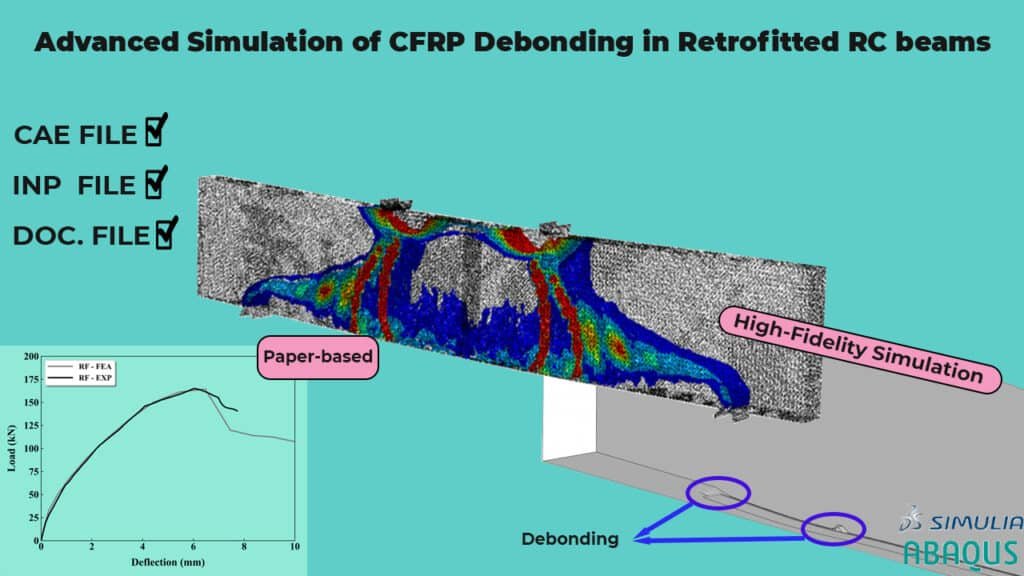
Abaqus
€150,00 Original price was: €150,00.€120,00Current price is: €120,00.
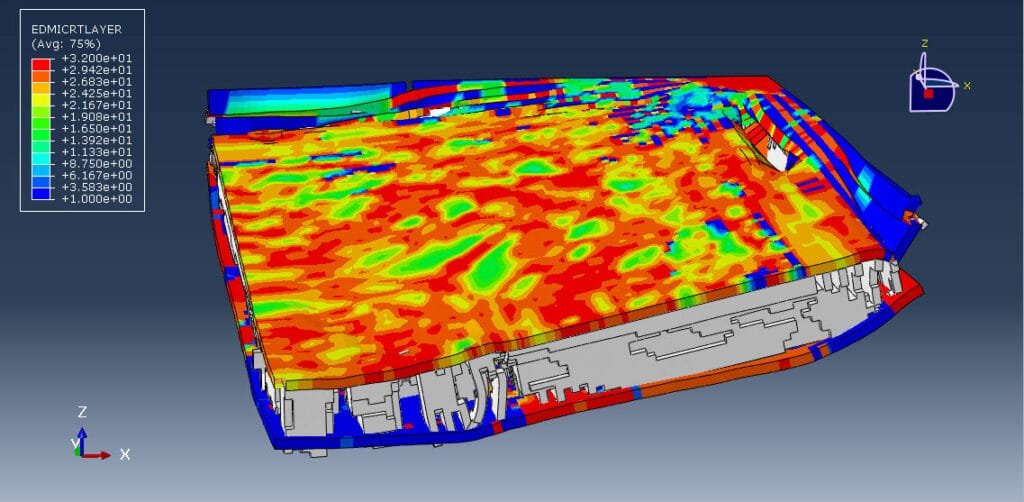
Abaqus
€49,00 Original price was: €49,00.€29,00Current price is: €29,00.
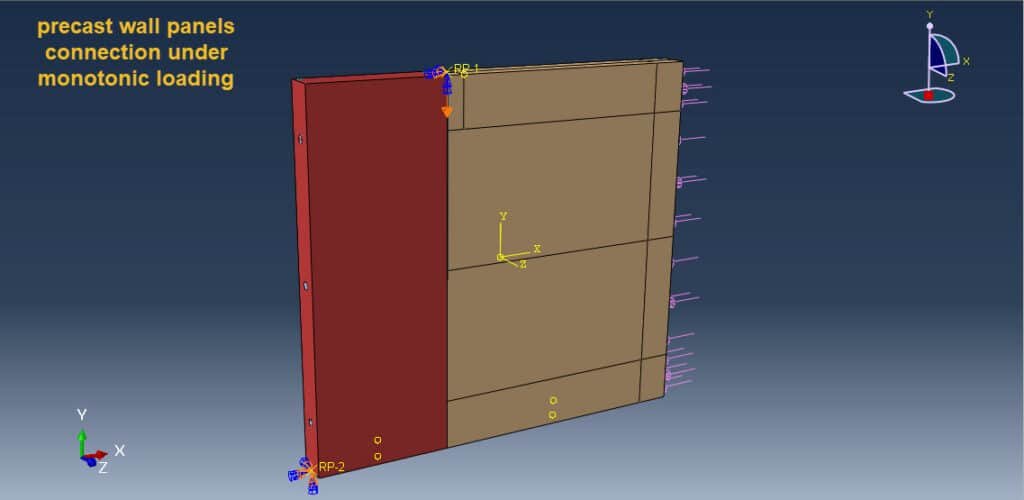
Abaqus
€46,00 Original price was: €46,00.€26,00Current price is: €26,00.

Abaqus
€50,00 Original price was: €50,00.€30,00Current price is: €30,00.
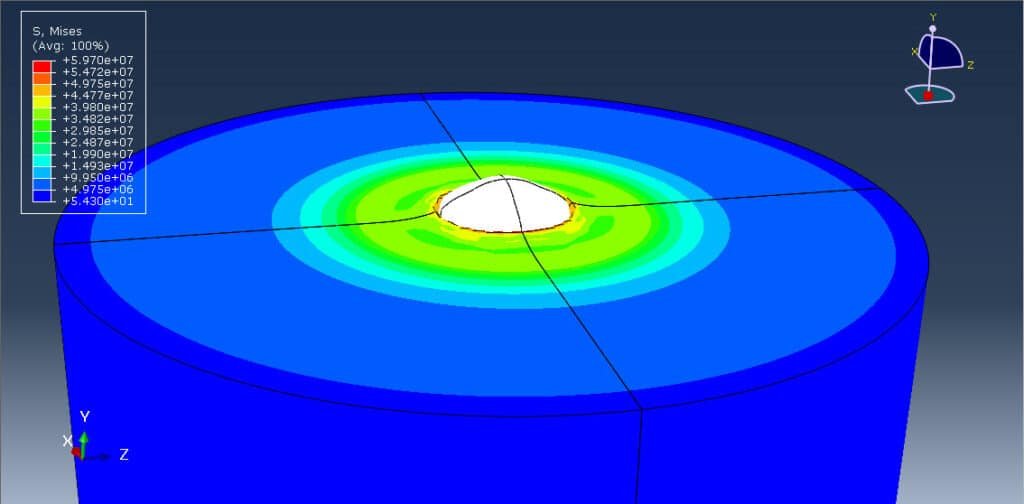
Abaqus
€46,00 Original price was: €46,00.€27,00Current price is: €27,00.
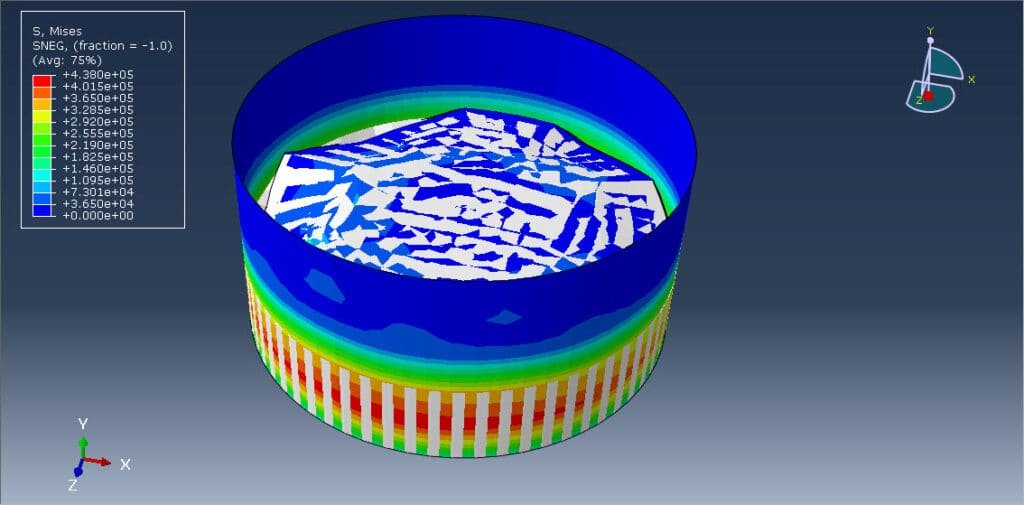
Abaqus
€45,00 Original price was: €45,00.€28,00Current price is: €28,00.
See more
Let’s Learn and Collaborate
Get VIP access to new content.
Sign up for weekly deals and news.
Engineering Downloads is a hub for learning,
collaboration, and sharing engineering models
and resources.
© 2025 Engineering Downloads. All rights reserved.

Want to receive push notifications for all major on-site activities?